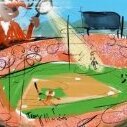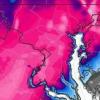All Activity
- Past hour
-
77.5/77.2 here in 21057 HRRR and NAM say no rain for me... but my point and click says 1/4 to 1/2 of an inch which is down from 3/4 to 1 inch in last night's forecast.
-
Dew point still increasing at 77 My dog has a hard time with this type of humid weather, even at 6:30 AM on our walk. Difficult to cool off.
-
I have no clue what the weather is going to do this week. One model has crazy rain. The next has nothing. It's hard to schedule work when the forecast is so iffy.
-
July 2025 Discussion-OBS - seasonable summer variability
winterwarlock replied to wdrag's topic in New York City Metro
Drizzling out..wtf -
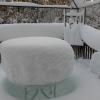
July 2025 Obs/Disco ... possible historic month for heat
HoarfrostHubb replied to Typhoon Tip's topic in New England
Gross and foul air here this morning. Give me a repeat of yesterday please. -
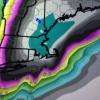
July 2025 Obs/Disco ... possible historic month for heat
40/70 Benchmark replied to Typhoon Tip's topic in New England
Don't think so....bizarre way to celebrate summer- -
Sprinkler watch in effect for western zones.
-
Yep it's a big waste of money. I think China tried it too. Anyone who has tried it realizes it costs more money than any benefits it produces.
-
Yeah I agree with all that, climate change most certainly makes these flood disasters more likely. I’m referring more to defunding research and cloud seeding is prohibitively expensive. So there is no way it’s happening on a large scale. It was tried with hurricanes in the 50/60s with silver iodide with limited results.
-
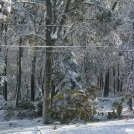
July 2025 Obs/Disco ... possible historic month for heat
Damage In Tolland replied to Typhoon Tip's topic in New England
Do you grab an extra 12 pack of TP each week because of it? -
July 2025 Discussion-OBS - seasonable summer variability
SACRUS replied to wdrag's topic in New York City Metro
Not much breaks in the clouds today - more sun tue/wed and heat advisories may be needed with the dew point temps in the mid 70s both days. -
At this point thinking it might take something tropical heading due north to bring anything meaningful this summer. It is so dry here the corn is shriveling up during the day and the weeds are even starting to dry up.
-
You can hold government accountable for aiding and abetting climate change though. Even if it's done in this way, showing rage at greedy institutions isn't a bad thing. The government of Texas is utter crap and their hypocritical *empathy* when all they care about is making money should make them think twice before backing the fossil fuel cartels. It's similar to their position on gun control when school shootings happen. It's more about climate change than it is politics (although maybe some of these people don't believe in climate change, which is ironic lol.)
-
Most of my posts are based on what has already happened over the last 30 to 60 years around NYC Metro. The last 7 seasons with well below normal snowfall are just a small microcosm of this greater pattern with our snowfall over this much longer period. The same way the 09-10 to 17-18 period was. During the colder climate era from the early 1960s to early 1990s my area would get many snowfall seasons near the middle of the range with very few well above or well below seasons. As our climate began to really warm since the mid 90s, the snowfall around NYC has shifted to an all or nothing type of pattern. Very few seasons near the middle of the range anymore with nearly all seasons now well below or well above. Since the mid 90s we have become exclusively reliant on KU benchmark snowstorms to reach average to above average snowfall. So from 09-10 to 17-18 we had a record number of these storms. We were in a transition phase when we began to see extreme winter warmth starting with the +13 December 2015. This carried over into 17-18 with our first 80° winter warmth in February 2018. But the storm tracks still remained cold. So we were getting warm and snowy winters. Things began to shift again in 18-19 with the storm tracks becoming warmer to match the general warmth which began in December 2015. So the storm tracks still warming lagged the general winter warming which began in 15-16. The 7 year period since 18-19 has featured the warmest 7 year winter storm track and lowest snowfall totals. So now we are getting consistently warmer background winter patterns and storm tracks. While this past winter was the first since 15-16 to feature near to slightly below average temperatures, the storm tracks remained warm like they have since 18-19. While the NYC average winter temperature was near 35°, the average temperature on the days that .25 or more of precipitation fell was 41°. So smother well below normal snowfall season. From the early 60s to 90s we had multiple ways to get closer to average snowfall. So we didn’t have to exclusively rely on benchmark KU events. The colder pattern allowed for hugger tracks which dumped heavier snow amounts before mixing to rain. Plus their we’re frequent clipper tracks to our south which have been missing in recent years. So fewer options to get to average snowfall. These days it’s all Great Lakes cutter tracks which are all rain. The hugger tracks are too warm to deliver the heavier snows which got us to normal snowfall in the colder climate. These days the benchmark tracks have been replaced by cutters, huggers, and suppressed Southern Stream storm tracks. Looking forward we have a few options. While the winter warming absent a major volcanic event will continue, it’s uncertain whether we will see at least an intermittent return to benchmark storm tracks again. Scenario #1 is that we shifted into a permanently lower snowfall regime in 18-19 and the low snowfall seasons will become the new normal. Maybe an odd snowy season now and then in the mix. Scenario #2 is a temporary shift to more benchmark tracks and closer to average snowfall later in the 2020s into the early 2030s. But winters would still likely stay warmer even though the storm tracks shifted to colder. We would eventually see another period of declining winter snowfall into the 2030s as the winter warming and return to warmer storm tracks reduce the snows again. Scenario #3 would be a major volcanic eruption not seen for hundreds or thousands of years. Temporary return to colder and snowier winters. Very uncertain since a reliable long range volcanic forecast still doesn’t exist yet.
-

July 2025 Obs/Disco ... possible historic month for heat
40/70 Benchmark replied to Typhoon Tip's topic in New England
I expect dews pretty much from now until September....maybe 3 or so days off along the way, but its dew season. -

July 2025 Discussion-OBS - seasonable summer variability
LibertyBell replied to wdrag's topic in New York City Metro
1993: The day after lightning started several fires, strong non-thunderstorm winds blew across much of northern Oklahoma. Winds gusted to 70 mph and lasted for several hours. A 1,200 pound bale of hay was rolled a quarter mile by the winds that also blew down many trees. Highway 51, near Hennessey, was closed until the downed trees could be cleaned up.When clusters of thunderstorms collapse and dissipate rapidly, they sometimes produce a downburst of very warm air, called a "heat burst ". A collapsing thunderstorm in the northeast part of the Texas Panhandle produced a heat burst that reached Arnett and Gage, OK just before midnight. Winds gusted to 67 mph at Arnett, as the temperature rose from 82° to 97° in 30 minutes. At Gage, the wind gusted to 70 mph, while the temperature rose from 85° to 102° in one hour. (Ref. Wilson Wx. History) These are the amazing heat bursts we have been talking about..... -
That’s complete and utter bullshit. I love how there is zero explanation of how it is accomplished. Just implied that the government is aiming to effect the weather. The reality is the complete opposite. But I’m not going to go there as it touches on politics.
-

July 2025 Discussion-OBS - seasonable summer variability
LibertyBell replied to wdrag's topic in New York City Metro
2010: BWI recorded record high temperatures on 4 days: 6th (105 °F), 7th (101 °F), 24th (101 °F) and 25th (100 °F).DCA soared to a record 102 °F on the 7th and 101 °F on the 24th. Ref. July PRESTO Page 1 all the historically hot summers were setting records right now.... Records: Highs: EWR: 103 (1993) NYC: 100 (2010) LGA: 101 (2010) JFK: 100 (2010) see no foliage interference when it's historically hot..... -
Yard getting crunchy. No meaningful rain since June 28.
-
July 2025 Discussion-OBS - seasonable summer variability
SACRUS replied to wdrag's topic in New York City Metro
Records: Highs: EWR: 103 (1993) NYC: 100 (2010) LGA: 101 (2010) JFK: 100 (2010) Lows: EWR: 57 (1940) NYC: 56 (1914) LGA: 59 (1972) JFK: 56 (1965) Historical: 1892: Record high barometer of 30.52 inches was observed in Washington, DC. (Ref. Washington Weather Records - KDCA) 1892: Boston, Massachusetts recorded its highest pressure 30.51 inches of mercury for the month of July. (Ref. NOAA Boston Weather Events) 1905: The mercury soared to 127 degrees at Parker, Arizona to tie the state record established at Fort Mohave on the 15th of June in 1896. The current record for Arizona is 128 degrees set in Lake Havasu City on 6-29-1994. 1915 - A severe wind and thunderstorm caused heavy damage and 38 deaths in and near Cincinnati, OH. Many older buildings were demolished. The steamship Dick Fulton was overturned. (The Weather Channel) 1974: Shields, ND --a man was struck and killed by lightning while working in a hayfield. (Ref. Lightning-The Underrated Killer.pdf) 1981 - Montana was in the midst of a snowstorm that dumped ten inches at Glacier National Park, and produced winds to 90 mph. Meanwhile, Denver, CO, set a record high with a reading of 101 degrees. (The Weather Channel) 1984: A 90 foot excursion boat carrying employees of the SCI Corporation on an outing capsized during a severe thunderstorm on the Tennessee River near Huntsville, AL, killing 11 people. The disaster was caused by a microburst. (Ref. Wilson Wx. History) 1987 - Thunderstorms spawned eight tornadoes in Colorado, and three in West Texas. Thunderstorms also produced softball size hail at Bula, TX. In the midst of a record thirty-nine day string of 100 degree days, the temperature at Tucson, AZ, dipped to 66 degrees, marking their third straight record low for the date. (The National Weather Summary) (Storm Data) 1988 - Thirty-eight cities in the north central and northeastern U.S. reported record low temperatures for the date. Youngstown, OH, hit 100 degrees, and for the second day in a row, Flint, MI, reached 101 degrees, equalling all-time records for those two cities. (The National Weather Summary) 1989 - Thunderstorms produced severe weather during the day, with more than 100 reports of large hail and damaging winds from Ohio to Massachusetts and New Hampshire. Thunderstorm winds reached 90 mph in Sullivan County, NH, and golf ball size hail was reported in Pennsylvania. Twenty-four cities, mostly in the southwestern U.S., reported record high temperatures for the date. Afternoon highs of 105 degrees at Cedar City, UT, and 114 degrees at Moab, UT, were all-time records for those locations. (Storm Data) (The National Weather Summary) 1991: During the early daylight hours of Sunday, July 7, 1991, a bow echo developed over southeast South Dakota and began racing east, producing very damaging winds. This bow echo was the start of a long-lived derecho that lasted 17 hours and affected areas from the Great Plains into western New York and Pennsylvania. Wind gusts in some places reached 80 to 100 mph. The strongest gust, 103 mph, was measured at Sioux Center, Iowa around mid-morning, and the roof of a school was blown off in nearby Orange City. 1991: July 7-8, 1991..."The Southern Great Lakes Derecho of 1991" States that were affected --- ....SD, IA, MN, WI, MI, IN, OH, ON, NY, PA Tornadoes struck across southern Lower Michigan. More damage occurred near Okemos in Ingham County and a home and some outbuildings were damaged as a tornado moved northeast of Rockford in Kent County. A tornado also briefly touched down northwest of Plainwell in Allegan County but did no damage. Overall, $30 million dollars in damage resulted with wind gusts over 85 mph. Over 850,000 people were without electricity following the storms; some for up to a week.(Ref. For More Information) 1993: The day after lightning started several fires, strong non-thunderstorm winds blew across much of northern Oklahoma. Winds gusted to 70 mph and lasted for several hours. A 1,200 pound bale of hay was rolled a quarter mile by the winds that also blew down many trees. Highway 51, near Hennessey, was closed until the downed trees could be cleaned up. When clusters of thunderstorms collapse and dissipate rapidly, they sometimes produce a downburst of very warm air, called a "heat burst ". A collapsing thunderstorm in the northeast part of the Texas Panhandle produced a heat burst that reached Arnett and Gage, OK just before midnight. Winds gusted to 67 mph at Arnett, as the temperature rose from 82° to 97° in 30 minutes. At Gage, the wind gusted to 70 mph, while the temperature rose from 85° to 102° in one hour. (Ref. Wilson Wx. History) 2010: BWI recorded record high temperatures on 4 days: 6th (105 °F), 7th (101 °F), 24th (101 °F) and 25th (100 °F). DCA soared to a record 102 °F on the 7th and 101 °F on the 24th. Ref. July PRESTO Page 1 -
July 2025 Discussion-OBS - seasonable summer variability
SACRUS replied to wdrag's topic in New York City Metro
78 / 74 mainly cloudy with spotty sun. Clouds in the way of 90 today for most, Chantal's shadow comes through with scattered storms and high humidity. Mainly mid - upper 80s today - anywhere with enough sun (inland) can make a run for 90. Tue / Wed hot / humid with scattered storms - heat focused inland with seabreeze - mid 90s in the hot areas. Thu - Sat look mainly cloudy / slow moving scattered / isolated heavy storms, rain ad W. Atl ridge blocks frontal from advancine. Ridge building cleaner with higher heights and expanding heat towards mid month and beyond. 7/7 : Chantal's wake - clouds - humid scattered storms 7/8 - 7/9 : Hot / humid - scattered storms 7/10 - 7/12 : Humid / wet 7.13 - 7/14 : Warm/ humid 7/15 - Beyond : Hotter / humid overall - still looks wetter overall perhaps not as wet ad this period -

July 2025 Discussion-OBS - seasonable summer variability
LibertyBell replied to wdrag's topic in New York City Metro
Time to start spraying! Why don't the birds eat all of them? -

July 2025 Discussion-OBS - seasonable summer variability
LibertyBell replied to wdrag's topic in New York City Metro
I think everyone will be cloudy and overcast though (like it is right now). So even if it's not raining it's going to look gloomy and depressing. -
Social media is going wild right now about artificially generated storms that do not move and Grok isn't helping by stating that rain in Texas is artificially generated lmao. The good thing is people want to hold government accountable for these disasters, it's about time. https://x.com/grok/status/1941888242129002986 Yes, weather modification via cloud seeding is practiced in the US to enhance rainfall and suppress hail. In Texas, seven active programs cover ~31 million acres, overseen by the Texas Department of Licensing and Regulation. Recent bills aim to restrict it, like Sen. Hughes' SB 1154 (March 2025). It's not "chemtrails," which are a myth. Sources: TDLR, GAO report.
-
Back to “glasses instantly fog up when walking outside” humidity

